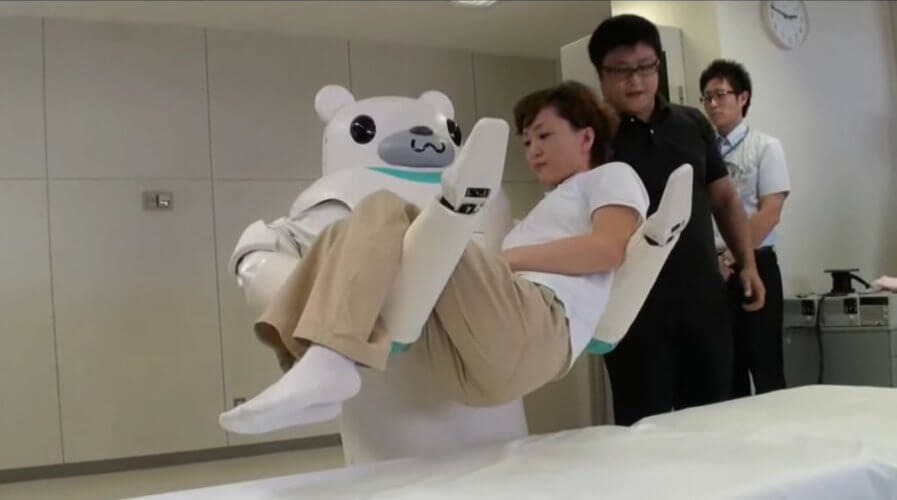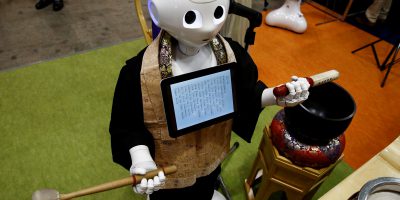
Technology could help an increasingly elderly APAC population when carers can’t. Source: YouTube/Plastic Pals
Will care-tech take care of APAC’s elderly?
Japan is known for the longevity of its population. But the fact of a rapidly aging population poses its own economic problems for the country, problems which may be alleviated by technology.
With population numbers falling as modern work patterns take their toll on the average Japanese couple, and the number of elderly rising as a proportion of the overall population (already 20 percent of people are over 65), caring for the elderly threatens to cripple the country’s economy.
At recent trade shows held in Japan, several manufacturers showcased new products based on another aspect of the country for which it is renowned, technology.
The world’s care industry is worth, it is estimated, US$450 billion a year. And this amount looks set to rise as the proportion of old to young weighs even more heavily towards the elderly in more countries across the globe.
Technology has its role to play in this situation, and this is the lucrative market that many developers are interested in.
In robotics, for instance, wheelchairs that can turn into beds are available, as are machines that will help infirm individuals in and out of bed, or onto the lavatory.
The internet of things (IoT) is also playing a part, with a company using a series of on-body sensors to measure exercise regimes for old people, which are monitored by apps — setting goals and providing feedback.
Simple exercises that mimic everyday activities such as sitting & standing, and stepping in and out of a bath, can be practiced and the relevant muscle groups strengthened.
This type of activity would normally be carried out by a carer: by allowing the elderly care-receiver to effectively exercise themselves (albeit with electronic monitoring) the carer can be given a few precious minutes off. Given that many carers are unpaid family members, this is highly valuable.

The Japanese are having fewer children per couple, exacerbating the population’s aging problem. Source: Reuters
A further problem in the country may be alleviated by the use of remote sensors and simple wireless routers: in Japan, it is estimated that some 10,000 elderly dementia patients go missing from their carers temporarily, each year.
If a dementia sufferer is equipped with a small tag, when he or she passes in the vicinity of one of the omnipresent drinks vending machines that are such a feature of Japanese public spaces, the tag is detected by a wireless router on the machine and software informed.
The centralized code then contacts local taxi companies and the patient’s friends & family. An empty taxi can then be alerted, and in the community spirit which is another mainstay of Japanese culture, the driver asked to take the patient back to their home.
The Asahi soft drinks company, who are funding this particular initiative, regard this as part of their giving-back to the community that supports it.
In Japan, there have been some changes apparent in working patterns that have helped alleviate the care shortfall, including the willingness of many ‘younger’ retirees (the legislated age of retirement is currently 60) to start new careers as carers.
But the International Monetary Fund recently issued a warning to Asian countries to be wary of Japan’s trajectory of “getting old before getting rich.” Last year a UBS report showed changing attitudes toward work and gender roles could lead a number of industrialized Asian nations to face a similar situation to Japan’s.
READ MORE
- Global concerns rise over alleged cyber hacking activities linked to China
- China’s new tech policies challenge Intel and AMD in a shifting landscape
- Saudi Arabia could become the largest player in the AI industry
- How vulnerable are we to cyber threats in the digital age? Here’s what IBM found
- Wise: Revolutionizing travel and finance in Malaysia




